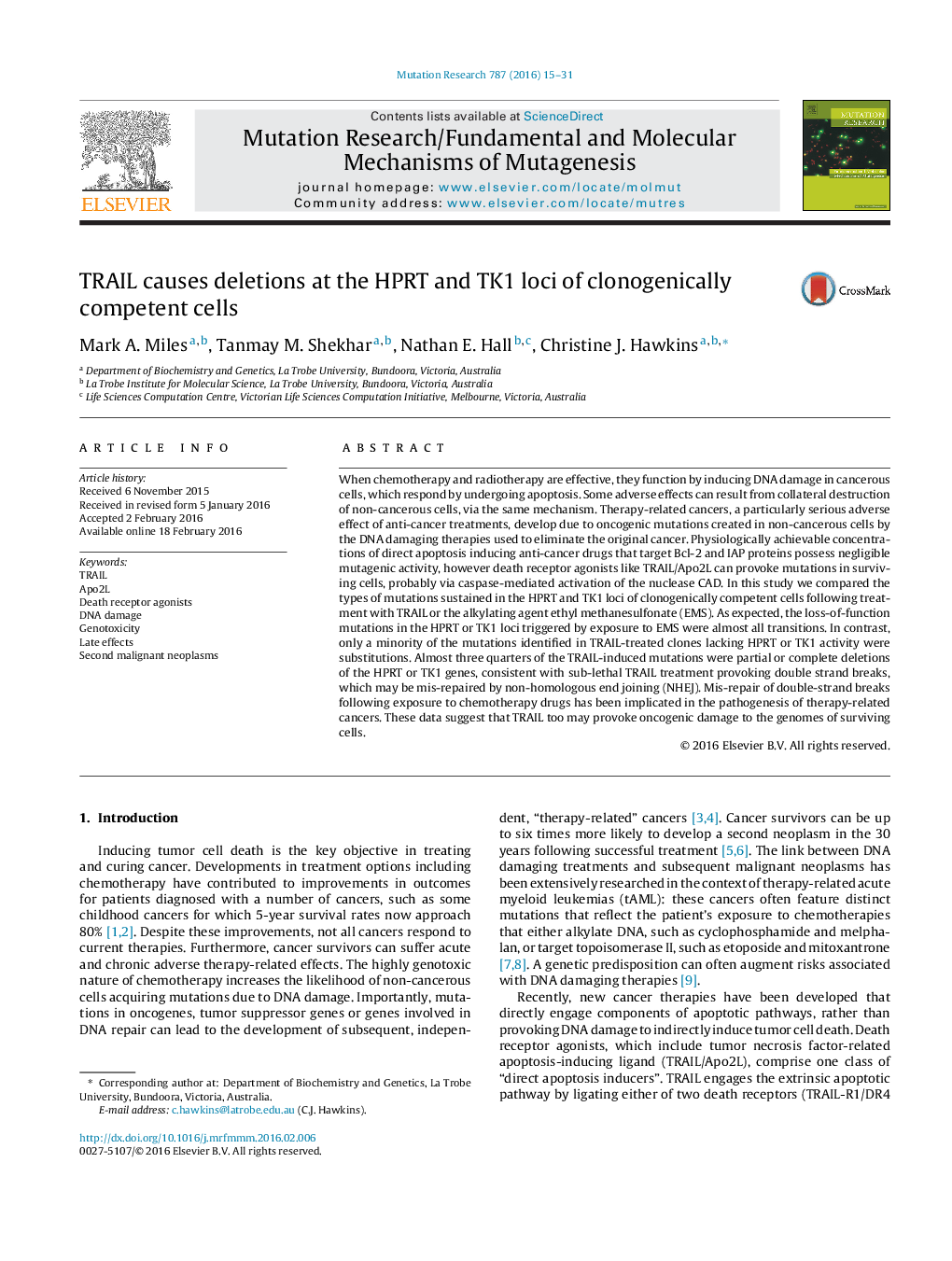| کد مقاله | کد نشریه | سال انتشار | مقاله انگلیسی | نسخه تمام متن |
|---|---|---|---|---|
| 2146116 | 1548313 | 2016 | 17 صفحه PDF | دانلود رایگان |

• Treatment with TRAIL or EMS provokes mutations in clonogenically viable TK6 cells.
• TRAIL is 2–5-fold less mutagenic than an equivalently lethal concentration of EMS.
• EMS mainly causes transition mutations at the HPRT and TK1 loci of TK6 cells.
• Most loss-of-function HPRT or TK1 mutations caused by TRAIL treatment are deletions.
When chemotherapy and radiotherapy are effective, they function by inducing DNA damage in cancerous cells, which respond by undergoing apoptosis. Some adverse effects can result from collateral destruction of non-cancerous cells, via the same mechanism. Therapy-related cancers, a particularly serious adverse effect of anti-cancer treatments, develop due to oncogenic mutations created in non-cancerous cells by the DNA damaging therapies used to eliminate the original cancer. Physiologically achievable concentrations of direct apoptosis inducing anti-cancer drugs that target Bcl-2 and IAP proteins possess negligible mutagenic activity, however death receptor agonists like TRAIL/Apo2L can provoke mutations in surviving cells, probably via caspase-mediated activation of the nuclease CAD. In this study we compared the types of mutations sustained in the HPRT and TK1 loci of clonogenically competent cells following treatment with TRAIL or the alkylating agent ethyl methanesulfonate (EMS). As expected, the loss-of-function mutations in the HPRT or TK1 loci triggered by exposure to EMS were almost all transitions. In contrast, only a minority of the mutations identified in TRAIL-treated clones lacking HPRT or TK1 activity were substitutions. Almost three quarters of the TRAIL-induced mutations were partial or complete deletions of the HPRT or TK1 genes, consistent with sub-lethal TRAIL treatment provoking double strand breaks, which may be mis-repaired by non-homologous end joining (NHEJ). Mis-repair of double-strand breaks following exposure to chemotherapy drugs has been implicated in the pathogenesis of therapy-related cancers. These data suggest that TRAIL too may provoke oncogenic damage to the genomes of surviving cells.
Figure optionsDownload as PowerPoint slide
Journal: Mutation Research/Fundamental and Molecular Mechanisms of Mutagenesis - Volume 787, May 2016, Pages 15–31